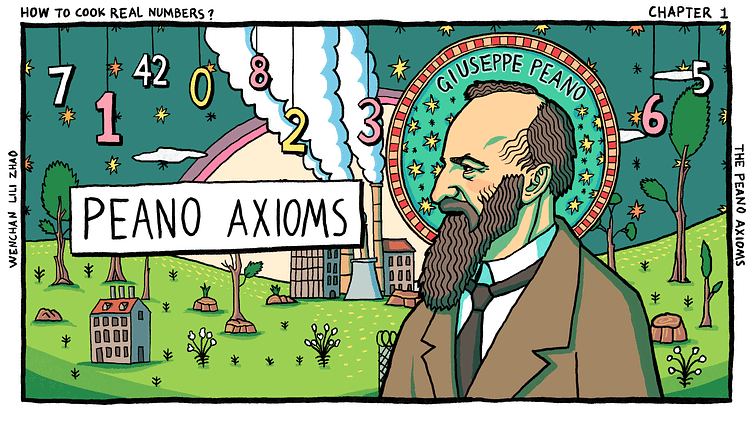The Making of How to Cook Real Numbers #1
Here are some illustrations for the YouTube video, The Peano Axioms, which is the first episode of an in-progress video series called How to Cook Real Numbers. This series aims to introduce to the audience how the field of real numbers is constructed within the context of set theory.
Playing as a child
Most of the mathematical problems I focus on are not understandable by children, despite of those genius. Indeed, my videos are mainly for adults. However, I use a more childlike style to express my videos, and there are two main reasons for this.
I hope that adults can face these abstract mathematical problems like children playing with building blocks, rather than being educated in a depressed mood. (If time permits, I even hope to draw some children’s picture books for these mathematical problems for adults, just like my favorite book 100 Steps to Science.)
On the other hand, I firmly believe that the childlike heart of adults is also something that should be taken seriously. Adults are pressed down by too many adult things, but as long as they still pursue beautiful things, their childlike heart will not be completely extinguished. In my opinion, a childlike heart is nothing more than a whimsical attitude towards play — it is not unique to children. However, there are too many adults around me who feel guilty when facing their childlike heart. I know that this sense of guilt may come from the intimidation caused by not-so-good things. Therefore, I hope that through my videos, they can see that the adult world is not entirely worthless. At least, in my opinion, what supports the mathematical world is not formal logic, but a childlike heart of asking why — formal logic is a product of this passion, not the place where the passion is generated.
Hope you will like it!👏







